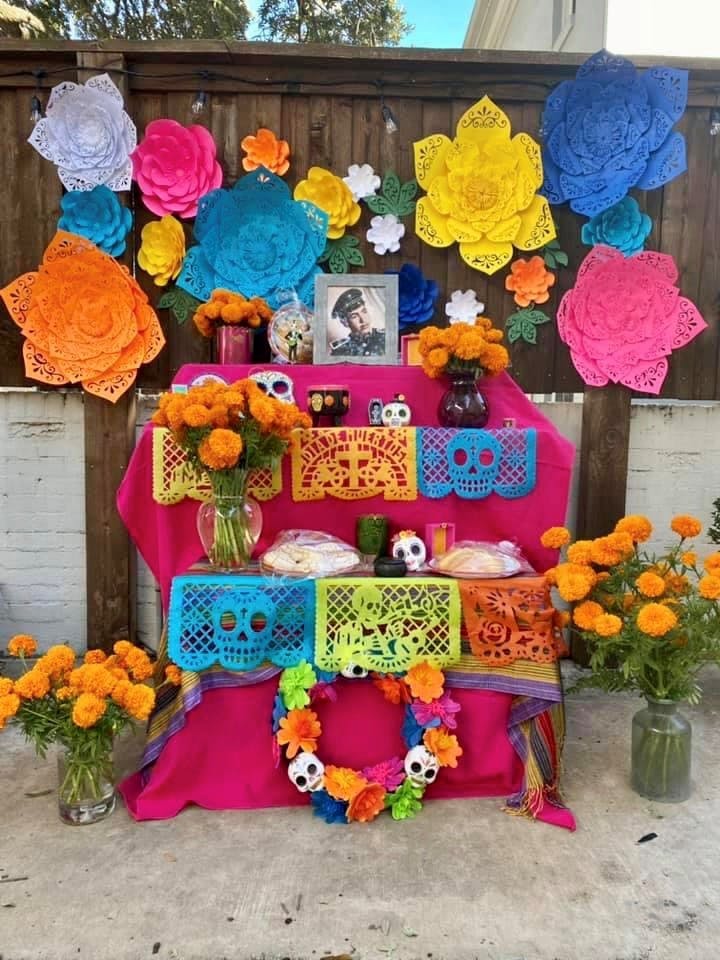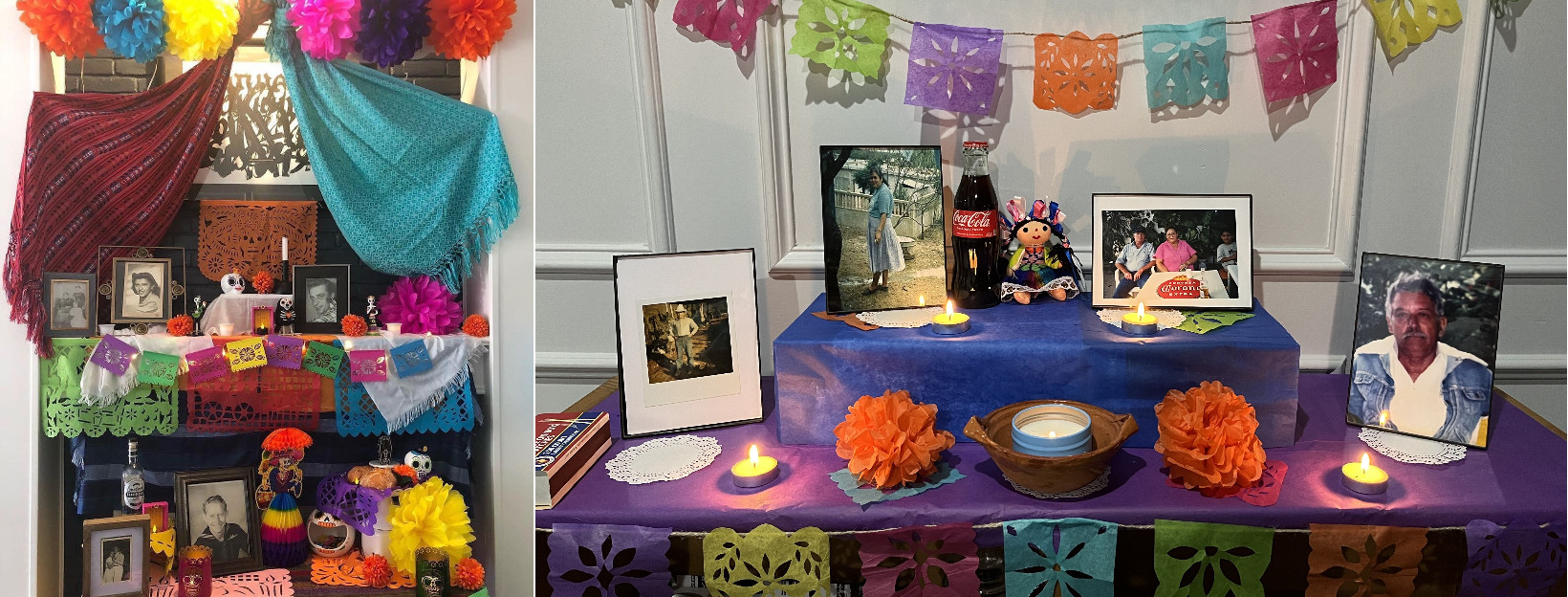El Día de Muertos: How Our People Celebrate Day of the Dead
Category: Building Community
Written By: C.C. Winkler and Laura Ruiz
Date: November 1, 2022

 C.C. Winkler is Parkhill's Marketing Manager.
C.C. Winkler is Parkhill's Marketing Manager.
Laura Ruiz is a Design Professional in Parkhill's Landscape Architecture Practice.
El Día de Muertos, or Day of the Dead, is a Mexican holiday that celebrates death and life. A holiday celebrating death may seem a little odd, but for many indigenous groups in Mexico, death is viewed as a welcomed part of life. The tradition originated with indigenous groups, such as the Aztecs and Mexicas, who celebrated the death of a loved one through a ritual that would help guide them on their journey to el Mictlán.
El Mictlán is the underworld in Aztec mythology and the place in which souls travel to find eternal peace. After the arrival of the Spanish, the rituals merged with the celebration of the Catholic church and were reinvented until how they are perceived today.
 The celebration of El Día de Muertos takes place from October 28 to November 3, although most people celebrate November 1 and 2. The celebration is divided into categories:
The celebration of El Día de Muertos takes place from October 28 to November 3, although most people celebrate November 1 and 2. The celebration is divided into categories:
- October 28 – dedicated to those who died suddenly, tragically, or from an accident
- October 29 – dedicated to those who drowned
- October 30 - dedicated to the forgotten souls
- October 31 - dedicated to the children who were never born
- November 1 - dedicated to the "little dead" or children
- November 2 – dedicated to those who died as adults
- November 3 - souls are sent off, and altars are taken down
Every year many families place ofrendas (altars), decorated with Cempasúchil (marigold flowers), papel picado, sugar skulls, pan de muerto, mole, or a loved dish of relatives to whom the offering is dedicated. As in pre-Hispanic times, incense is placed to aromatize the space around the altar.

Today, C.C. Winkler and Laura Ruiz share how they are celebrating Día de Muertos this year.
C.C.'s Story:
Día de Muertos is a beloved celebration spanning generations in my family. We grow up with the understanding that death is just another step in our journey and that our soul does not disappear once the human body shell is left behind. During Día de Muertos, we love gathering around the table and telling stories of our beloved departed, laughing and crying at the same time, making sure the essence of our loved ones does not fade away and that they remain a part of our verbal traditions.
In this way, children grow up hearing stories about their grandparents, great-grandparents, and beyond, knowing their ancestors and the characteristics and foundation of our families. This has always given us a sense of history, of being embraced and supported by our loved ones from across time and grief, and knowing that we are never alone but surrounded by love and family.
As an additional fun fact, the Aztecs believe the Xoloitzcuintli dog, the hairless, sacred dog of the gods, would be a guide and faithful companion in the underworld. We have our beloved Mitztli, Goddess of the Moon (Luna) to guide all our ancestors back to us during Día de Muertos, and help them back to the heavenly Mictlan, until we are together again the next year.
Laura's Story:
This year I’m celebrating Día de Muertos with my first ever ofrenda as an adult. My husband and I wanted to remember and honor our grandparents who have passed, so we decided to put together a small ofrenda at home. We handcrafted the papel picado and flowers using tissue paper and incorporated some traditional Mexican elements such as the tiny cazuela (clay bowl) and the Otomí doll, Lele.
As we were gathering pictures from our parents to put on our ofrenda, they shared with us the beautiful stories of our grandparents. I loved that I got to learn more about the things that they liked. For example, I learned that my grandma loved the color fuchsia and that my husband’s grandpa loved apple fritters.
My favorite part of this celebration is that the stories of our loved ones who have passed are being shared with the new generations – it’s that link between the stories of our past, our present, and our future.
El Día de Muertos is considered a celebration of memory and a ritual that privileges remembrance over oblivion. The celebration allows loved ones to live on through the stories and memories shared.
In Mexico, the celebration of El Día de Muertos varies from state to state, from municipality to municipality, and from town to town. However, throughout the country, it has the same principle, bringing families together to welcome their loved ones who return from beyond.



